Most chicken owners want a safe and fun space for their chickens to live.
When it comes to building a chicken run, you might think that everything is pretty much the same; that all you really need are some basic necessities like a vent and lights, but that’s not true!
For example, shade plants are a great option for your chicken run, as they have many benefits.
Shade plants provide your chickens with essential protection from the sun’s harsh rays. This is especially important if you live in an area that experiences scorching summers, as the heat can be dangerous for your flock.
Shade plants are also a great way to add color and beauty to your chicken run. They provide an aesthetic benefit that can really make your coop look amazing. So, why don’t you make your chicken yard more attractive?
In this article, we will talk about the top 7 finest shade plants for chicken runs and whether these shade plants are safe for chickens.
- Mulberries
- Climbing Roses
- Butterfly Bushes
- Grape Vine
- Clematis
- Star Jasmine
- Lemongrass
1. Mulberries
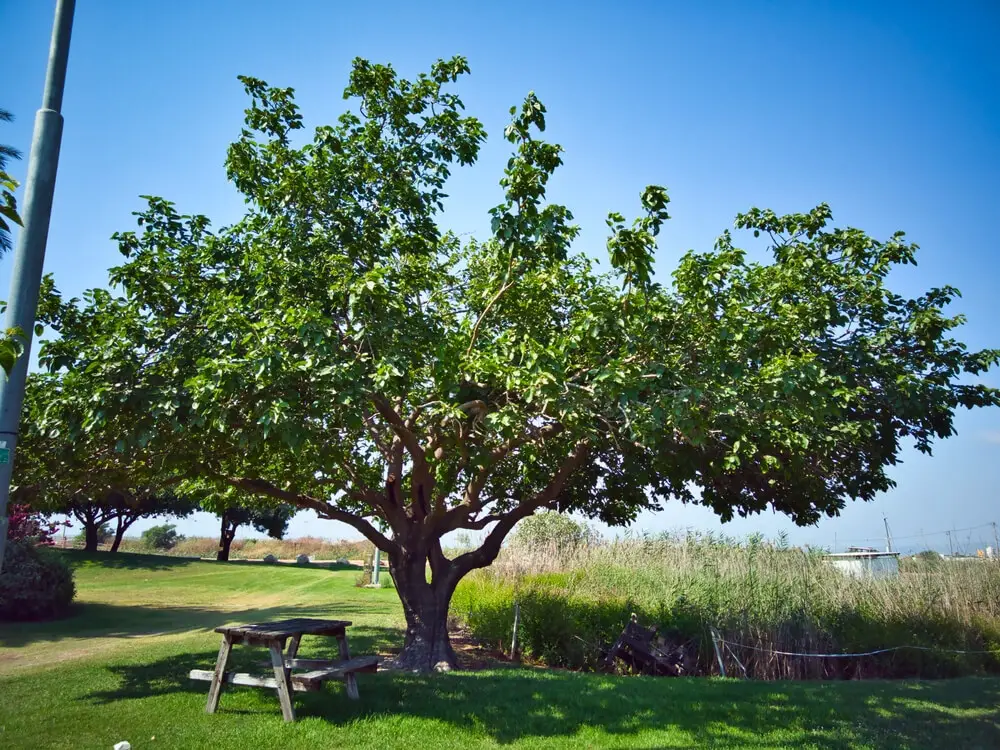
Mulberries are an excellent choice for a shade tree for your chicken run. They’re fast-growing, attractive, and produce delicious fruit that will keep your chickens happy!
When you first plant mulberry trees, they may not look like much. But after just a few years of producing fruit and growing new branches, they’ll be a beautiful addition to your backyard.
Lifespan
The lifespan of mulberries depends on the variety you choose to plant. Most mulberry trees live between 50 and 75 years, but some varieties can live up to 100 years!
Red mulberry trees rarely live more than 75 years. Mulberry trees don’t live as long as they should because of bad pruning, not enough water, insects, and diseases.
Growth Rate and Size
Mulberry trees are considered fast-growing because they can grow 10 to 12 feet in six years.
White mulberry trees can reach a height of 80 feet when they are full grown, while red mulberry trees can only reach a height of 70 feet, but they have the same spread.
The trees are dense, with a round-topped canopy and thin branches that are close together and often form a “witch’s broom.”
Best place to grow Mulberries?
The best places for mulberry trees to grow are in full sun, but they also do well in partial shade. They like soil that is moist, drains well and is rich in nutrients. However, they can grow in a variety of soils, even ones that are rocky, wet, or alkaline, which makes them a good choice for stopping erosion. They are easy to move and can live in both cities and by the sea.
Mulberries Diseases
Mulberry trees, like many other trees, often get hurt or sick because of insects. These insects can cause white peach scale, bacterial blight, leaf spots, cankers, and two-spotted mites, among other things.
When a mulberry tree is sick, the cause should be observed and taken care of or the tree is likely to die in the long run. With an insecticide program, you can get rid of insects that are a problem. Make sure to follow all of the label instructions on the insecticide container.
Can chickens eat Mulberries?
Mulberries are also a great choice for your chickens because they’re high in vitamin C. This helps boost their immune system, which will help them stay healthy and happy.
Fresh mulberries are 88 percent water and only 60 calories per cup, making them a low-calorie option (140 grams).
Other nutrients found in fresh mulberries:
- protein
- fiber
- carbs
Mulberries are becoming more popular around the world because of their sweet taste, high nutritional value, and many health benefits.
It’s common to eat dried mulberries, like raisins, in desserts and also chickens love devouring it.
2. Climbing Roses
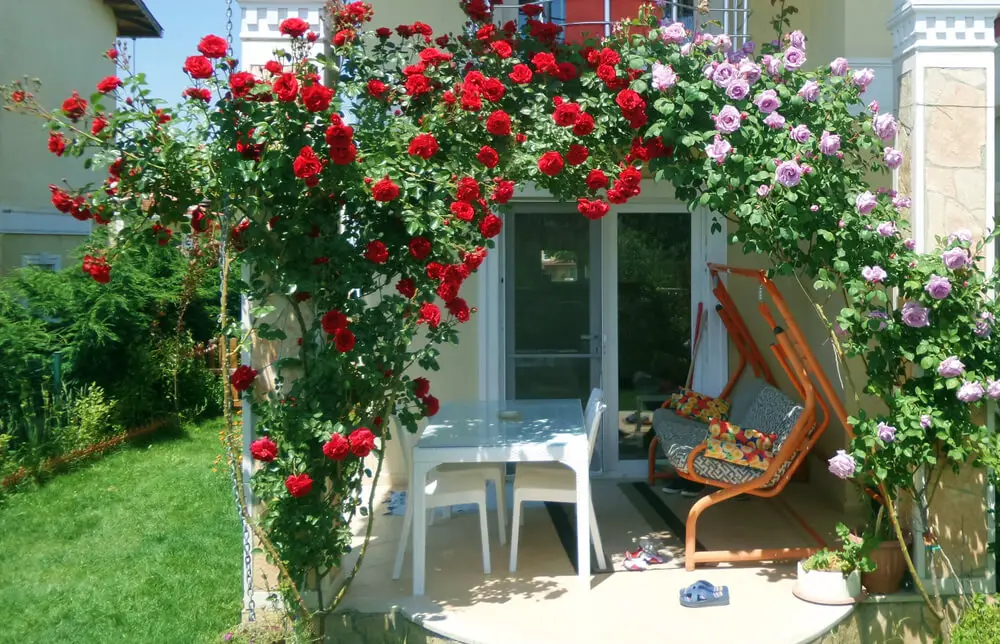
Climbing roses are gorgeous plants that will help keep your chickens cool by providing shade during the summer months. Plus, their flowers are beautiful (and fragrant!) so you can enjoy their beauty from the comfort of your home or even from inside the chicken run itself if it’s big enough!
Roses generally grow in U.S. Department of Agriculture plant hardiness zones 4 through 9, depending on the variety.
There are many different types of climbing roses available today, ranging from hybrid tea roses that bloom all summer long to miniature roses that look like little bushes covered in tiny flowers. Some varieties even offer fragrance!
Lifespan
A rose plant can live anywhere from six to one hundred years. Most modern roses live for 6–10 years, but climbing roses can live for 50 years or more.
They are hardy, and can withstand cold weather. Climbing Roses are great for people with limited space in their yard, as they can be trained to grow along an arbor or fence.
Grow rate & Size
You can expect a fully grown Climbing Rose in two to three years. They can reach 6 to 12 feet long and will spread about 3 to 4 feet wide.
Best place to grow Climbing Roses?
You can grow climbing roses in a variety of climates, including cold ones—they just need a little extra protection in the winter. They’re also really easy to train over arbors, fences, and chicken coops (runs).
Climbing Roses Diseases
Depending on the climate, climbing roses can be susceptible to diseases such as:
- Botrytis blight
- Powdery mildew
- Rust
- Anthracnose
They can also be affected by aphids, mites, and Japanese beetles.
Can chickens eat climbing roses?
Yes, chickens can eat climbing roses.
They aren’t the most nutritious food for your flock, but they do contain small amounts of vitamin C and some minerals like copper. If you want to feed them to your chickens, make sure you remove any dead leaves or woody stems before giving them to your birds.
3. Butterfly Bushes
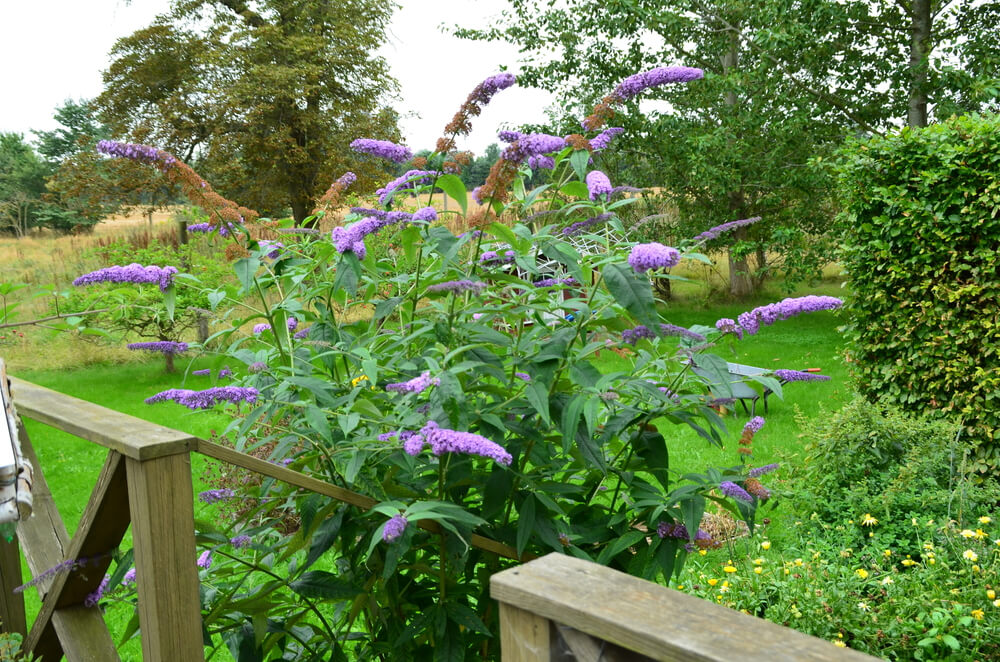
Butterfly bushes (Buddleia) are an excellent choice for your chicken run because they offer a lot of shade, and their flowers attract butterflies and bees. They’re also easy to grow, and they come in a variety of colors.
Lifespan
The life cycle of a butterfly bush can last up to 30 years, during which time it will continue to produce blooms despite the fact that it will have grown and flowered quite swiftly.
Growth Rate & Size
It takes about 2 years for these plants to reach full maturity, but they’ll provide plenty of shade and beauty during that time!
They can grow 6-10 feet tall per year, and 4-6 inches in diameter at their widest point.
Best place to plant Butterfly Bushes?
Butterfly bushes thrive in poor soil and full sun, so it’s important to test your soil before planting them. If it’s too acidic or alkaline, you may need to adjust the pH using lime or sulfur.
Once you’ve determined that your soil is at the right pH level, you can plant your butterfly bush seeds directly into the ground after the last frost has passed. Or you can start them indoors about 6 weeks before transplanting them into the ground once temperatures have stabilized above 60 degrees F.
They can thrive in USDA plant hardiness zones 5 through 11, depending on the butterfly bush variety.
Butterfly Bushes Diseases
These plants are loved by gardeners and landscapers alike, but they’re not immune to disease.
Here are some of the most common butterfly bush diseases, along with tips on how to prevent or treat them.
Leaf spots: Leaf spots can be caused by a number of different things, including fungi and bacteria. They can also be caused by over-fertilizing your plant or overwatering it. If you see brown or yellow spots on your leaves, check your soil’s pH level and make sure you don’t have too much fertilizer in the mix—you may need to reduce how much fertilizer you’re giving your plant every week.
You should also water less frequently and make sure there’s plenty of sun for your plant to soak up as well as plenty of air circulation around its base.
Insect infestations: Insect infestations can cause yellowing leaves, which will eventually turn brown and fall off if left untreated.
In addition to treating any insect infestations immediately with insecticide (and avoiding pesticides), you can also try spraying your butterfly bush with a solution of one tablespoon of dishwashing soap per gallon of water once every two weeks throughout the summer months when insects tend to be most active. This will help keep pests away, which should prevent yellowing leaves.
Powdery mildew is caused by a fungus that grows on the plant’s leaves and stems. You’ll see white or grayish-white patches of powder on the plant’s leaves. These patches can spread to other parts of the plant, causing yellowing and stunted growth.
For powdery mildew, spray your plant with a fungicide containing potassium bicarbonate or potassium sulfate.
Rust is another fungal disease that causes reddish-brown spots on leaves, stems, and flowers. It can also cause deformities in new leaves and flowers. For rust, simply clip off all affected leaves and discard them in the trash (don’t compost them!).
Can chickens eat Butterfly bushes?
Chickens won’t eat butterfly bushes, but on the other hand, butterfly bushes attract insects which can be a good source of protein for your chickens.
4. Grape Vine
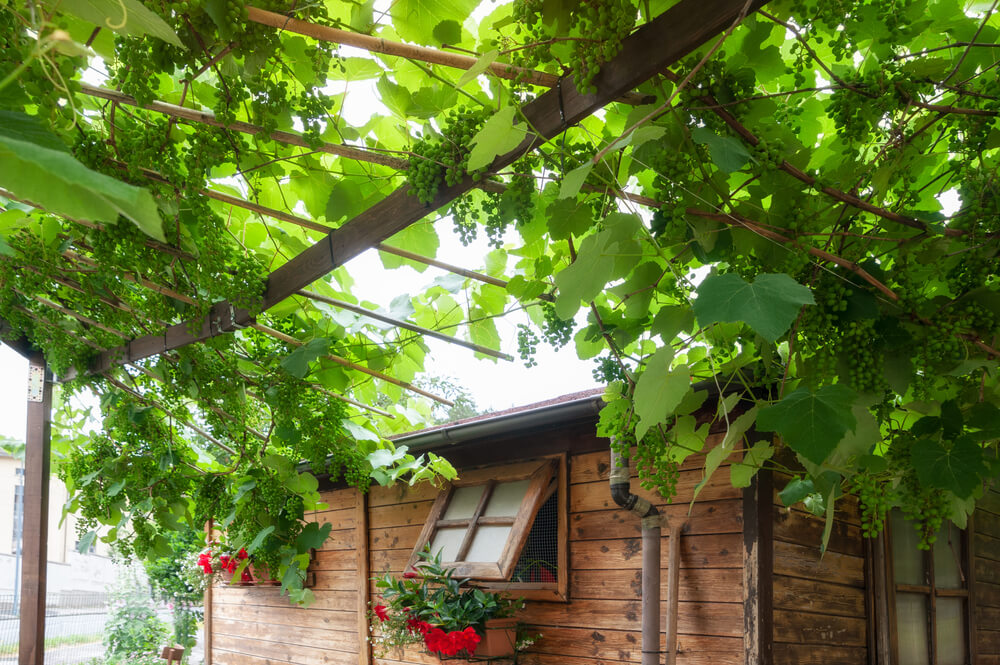
Grape vines are great for providing shade in a chicken run. The leaves are large and thick, so they provide a lot of coverage for the chickens. The grapes themselves are edible and can be enjoyed by the humans on your property as well as the birds.
Lifespan
Grape vines can live up to 50 years, but they’re very delicate and require a lot of care and maintenance. They need pruning in the early spring and fall, which means cutting off dead wood and new shoots from previous seasons.
Growth Rate & Size
Grape vines are a type of woody climbing vine, and they grow rapidly. The vines can grow anywhere from one to three inches per day, depending on the species, environment, and time of year. They’re also very vigorous growers because they’re perennials.
Grape vines tend to be smaller than other woody vines, but they can still be quite large. The average size of a grape vine is about six feet in height, but some varieties can reach up to 25 feet in height!
Grape Vines Diseases
Grape vines are susceptible to a number of diseases, but most are manageable if you take steps to keep your vines healthy. Here are some of the most common diseases that can affect grape vines:
Black rot
Black rot is a fungal disease that causes black spots on leaves and fruit. It’s caused by infection with Botrytis cinerea, which also causes gray mold in strawberries and other plants. The fungus can be spread by wind or water splashing spores onto foliage. The best way to treat black rot is to spray with a fungicide every 10 days until harvest time.
Mildew
Mildew is another fungal disease that causes yellowed leaves and poor growth. It’s caused by infection with Sclerotinia sclerotiorum or Sclerotinia minor, which cause similar symptoms in many different plants. Mildew can be treated by spraying with a fungicide every two weeks until harvest time.
Powdery mildew
Powdery mildew is another fungal disease that causes white powdery patches on leaves, stems, flowers, and fruit. It’s caused by infection with Podosphaera leucotricha and often appears during periods of high humidity.
Can chickens eat grapes?
Yes, chickens can eat grapes. Grapes are a great way to add variety to your flock’s diet because they offer an alternative source of nutrients in addition to the grains they typically consume.
5. Clematis
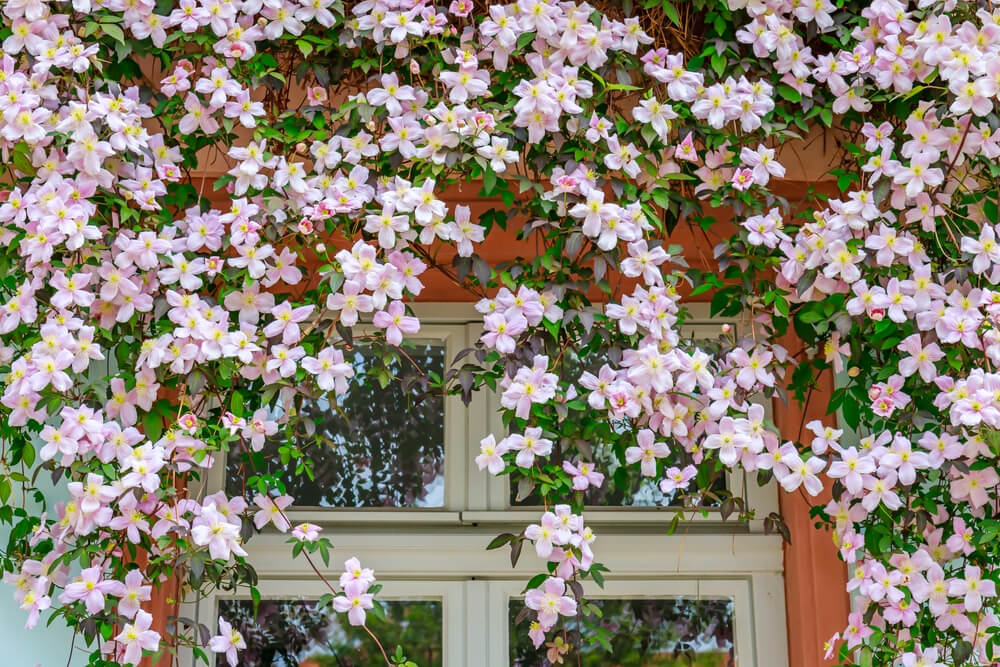
Clematis is a great plant to have in your chicken run or coop. It’s easy to grow, and it’s not very picky about the soil, so it can survive in a lot of different environments.
Clematis is easy to grow from seed, but you can also buy plants from nurseries if you don’t want to bother with starting them from scratch.
Lifespan
Clematis vines are hardy plants that require little maintenance and can be trained to grow up trees, fences, or trellises. They’re also easy to propagate, so if you have a favorite variety and want more of it, you can just take a cutting from the old plant and replant it!
Their lifespan depends on the climate in which they’re grown. In general, clematis vines will live between 40 and 50 years, though some varieties have been known to live longer than that.
Growth Rate & Size
They can grow up to 20 feet long in one year, though many varieties only reach about 30 feet long.
Clematis plants are a very popular choice for gardeners who are looking for a vine that can grow on trellises, fences, and other structures to create beautiful displays of flowers. They come in a wide range of colors, including pink, purple, blue, white, and more.
Clematis Diseases
Unfortunately, clematis is susceptible to several diseases that can severely affect their growth, flowers, and leaves. These diseases include powdery mildew, rust fungus, Scale insects, and Verticillium wilt.
Powdery mildew is one of the most common problems with clematis. It is caused by a fungus that develops on the leaves of your plants. To prevent this disease from affecting your plants, you should remove any dead leaves or flowers from your plants and dispose of them in a trash bag that can be sealed tightly when you take it out to your garbage can. The spores that cause powdery mildew thrive in warm temperatures so avoid watering your plant during the heat of the day when humidity levels are high as well. You should also try to keep the area around your plants free of dust by cleaning off any debris regularly.
Rust diseases – Rust fungi infect clematis by producing spores on older or dead leaves that eventually fall onto younger leaves causing them to turn yellow or brown with orange spots on them as well as curling up at the edges while they die off completely within days if not treated properly using fungicides like Captan (Bayer) or Merivon (Syngenta).
Scale insects – These immobile creatures attach themselves to plants and suck out the sap from the leaves, stems, or roots of the plant. They leave behind honeydew that attracts ants and whiteflies which then spread disease to other plants in your garden or home.
Will chickens eat the clematis plants?
They will eat the leaves, and they’ll also eat the seeds that fall from the plant. The seeds are high in protein, so they make a great supplement for your chickens’ diet.
6. Star Jasmine
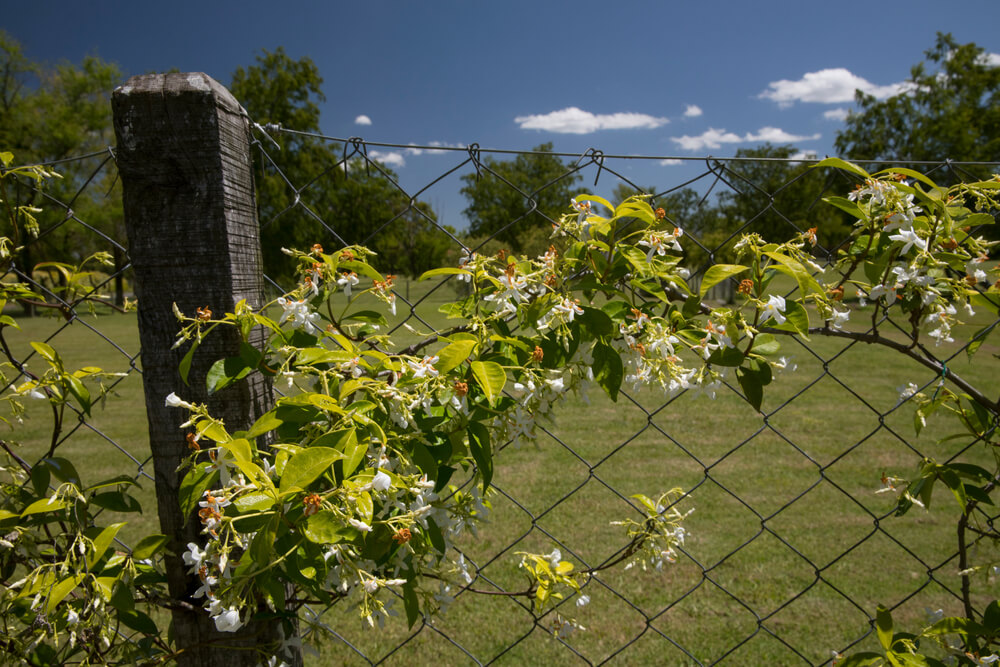
This beautiful plant provides a vibrant green canopy that will protect your chickens from the sun’s harmful rays. It’s also easy to maintain and requires very little pruning or maintenance.
Lifespan
The Star Jasmine plant is a very hardy plant that has a lifespan of up to 20 years. It grows best in U.S. Department of Agriculture hardiness zones 8 and 10, but can be grown in other areas with proper care.
Growth Rate & Size
The star jasmine plant grows very quickly and can reach 3 to 6 feet per year.
It can grow up to 20 feet tall and has delicate white or pink flowers that bloom in the spring. Also, star jasmine can grow up to 20 feet wide!
Star Jasmine Diseases
Common pests and diseases that attack star jasmine are aphids, mealybugs and scale.
Aphids are small, soft-bodied insects that feed on the sap of plants by piercing the plant tissue with their mouthparts.
Aphid infestations can be managed by pruning out and destroying infested stems and branches while preventing further infestation by applying insecticidal soap or horticultural oil spray to the plants.
Mealybugs have waxy filaments on their backs while scales have a hard shell on their bodies. Without treatment, mealybug infestations can cause leaves to curl and yellow while also causing new growth to be stunted or deformed.
Severely infested plants should be cut back and destroyed as soon as possible because these insects tend to spread quickly among different plants in the garden.
Scale infestations can be controlled by pruning out and destroying infested stems and branches while preventing further infestation through the application of insecticidal soap or horticultural oil spray to the remaining healthy parts of the plant.
Can chickens eat Star Jasmine?
The short answer is no. Star jasmine is poisonous to chickens because it contains calcium oxalate crystals, which are sharp enough to scratch their throats when they try to eat the leaves or berries. If your chicken eats a large enough amount of star jasmine, this scratching can lead to choking or internal bleeding.
7. Lemongrass
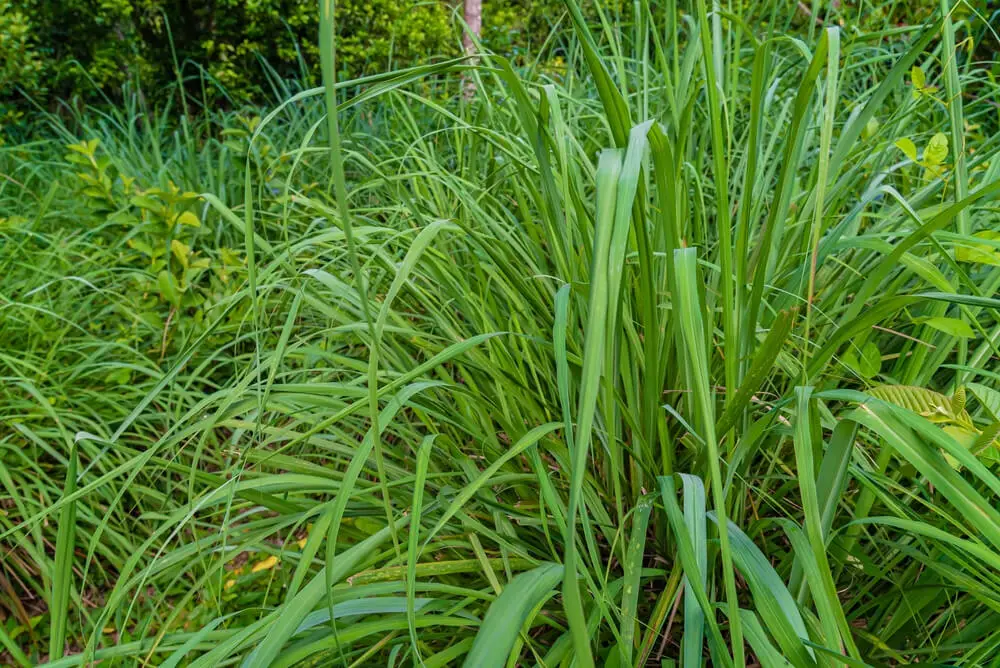
Lemongrass is a perennial grass that is native to Asia and Africa. It grows from rhizomes, which are horizontal stems that send up new shoots each year.
The leaves of lemongrass are light green and long, with edges that curl slightly inward. Lemongrass produces white flowers on tall stalks, which are followed by seed heads that resemble miniature versions of the leaves.
Lemongrass is an excellent plant to plant in your chicken run for several reasons;
First, it provides shade for your chickens. This can help keep them cool during the summer when temperatures can get quite hot.
Second, lemongrass has a distinct smell that repels insects and other pests from the area around it. This can help reduce the need for pesticides in your chicken run!
Finally, lemongrass is very easy to grow and can be planted just about anywhere—even in containers on balconies or patios!
Lifespan
Lemongrass has a long lifespan—it will grow for more than three years and live for at least five years.
Growth Rate & Size
Lemongrass grows quickly and can reach heights of up to 2 meters (6 feet). It thrives when planted in full sun but can also grow well in partial shade conditions.
Expect a plant to reach a size of 3 to 5 feet tall and up to 2 feet wide in a growing season.
Lemongrass Diseases
Lemongrass is vulnerable to several common diseases and pests, including:
Diseases:
Fusarium wilt (also called Panama disease) – The Fusarium fungus causes this disease, which can kill lemongrass plants if left untreated.
Symptoms include yellowing leaves and dying stalks. If you notice these symptoms on your lemongrass plant, immediately isolate it from other plants to prevent the spread of the disease.
You may also want to consider replacing your soil with fresh soil and using a fungicide to treat the plant.
Pests:
Scale insects – Scale insects can attach themselves to leaves or stems and produce honeydew, which attracts ants or other insects that feed on it. They can be treated with insecticidal soap or horticultural oil sprays.
Mites move quickly among plants so they are difficult to find; look for dark spots on leaves where they have been sucking out sap from inside leaf cells.
To treat mites, use horticultural oil sprays or soaps.
Spider mites are another common problem for lemongrass; they leave small yellow spots on leaves and cause stunted growth. Treat them with insecticidal soap or pyrethrin-based products.
Can chickens eat Lemongrass?
Yes! Chickens can eat lemongrass. In fact, it’s a great treat for them. Lemongrass is a type of grass that grows in warm climates and has a citrus flavor. If you want to give your chickens some lemongrass, just make sure they don’t eat too much at one time because it can cause digestive upset.
Chicken manure is bad for shade plants.
The reason is that it contains too much nitrogen, which makes the soil more acidic and less suitable for growing plants.
Conclusion
I hope this article gave you some information on shade plants for chickens that are beneficial and help them live longer healthier lives. You can see how these gorgeous shaded plants can provide many benefits to your chicken run and yourself as well, as they are a beautiful addition to any home or yard.
I highly recommend shade plants and fruit bushes if you live in a sunny area, as they are beneficial to your chickens.
Shade plants are also great for your chickens because they provide them with environmental enrichment. Environmental enrichment is a process that you should use to make your chickens’ environment more interesting and fun, which will keep them from getting bored.
Remember that just because a plant is “safe” doesn’t mean that hungry chickens won’t eat it.
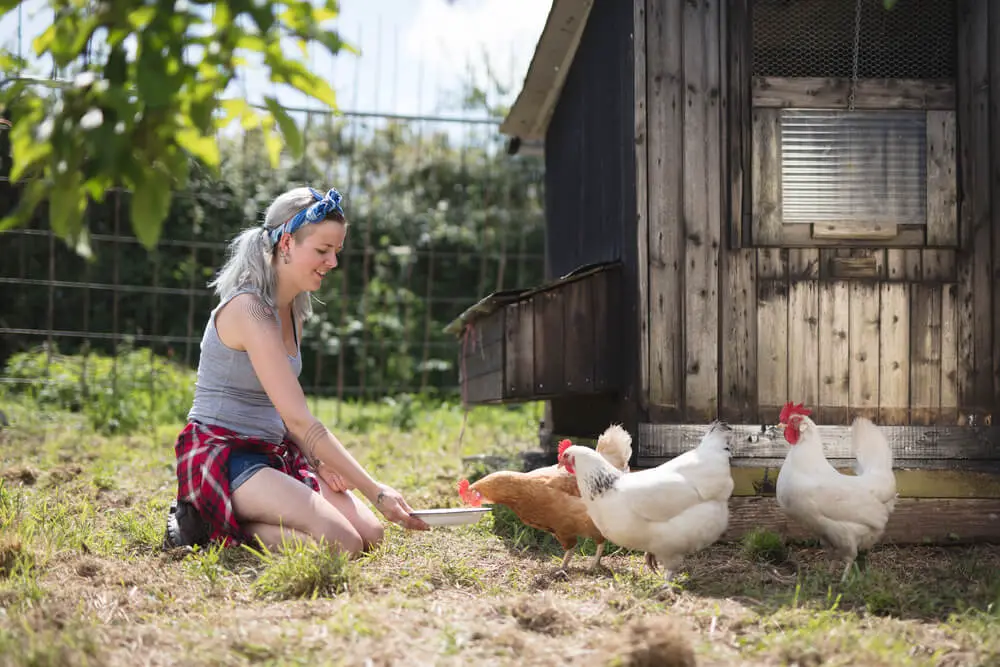
Shannon Stansberry has been engaged in the business of raising chickens for more than 12 years. In 2016, she accomplished the Agriculture & Natural Resources program at Mt. San Antonio College. At present, she tends to more than 80 chickens on her 4-hectare farm. Shannon regularly shares her insights and experience on how to raise healthy and contented chickens on the platform Typesofchickens.com